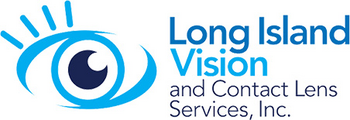Patching or Vision Therapy For Lazy Eye?
How Does Vision Therapy Compare To Eye Patching?
Amblyopia, commonly referred to as Lazy Eye, occurs when the brain and the eye are not working in unison. This results in decreased vision in an eye that otherwise seems healthy.
Traditionally, patching the better seeing eye was the only method used to treat amblyopia. However, it is very uncomfortable, has limited results past a certain age, and does not develop the patient’s normal binocular vision or depth perception.
Vision therapy, however, can help improve the amblyope’s visual abilities by using a series of personalized exercises to improve eye coordination, depth perception and reduce suppression (where the brain inhibits –suppresses– blurred or double vision by ignoring the image of one of the eyes).
Speak with our staff from Vision Therapy Center At Long Island Vision Care and discover how vision therapy can help you or your child with amblyopia.
Research has shown that amblyopia is caused by the brain’s inability to use both eyes as a team. In fact, the brain actively ignores the incoming information from one of the eyes. Further to poor visual acuity, those with amblyopia are prone to difficulties with depth perception, eye movements related to reading, and visual decision making when driving.
What Is Amblyopia?
A “lazy eye” is not at all lazy or weak.
A lazy eye is likely to be just as strong as the other eye, but because of impaired binocular vision, the signals from the amblyopic eye have been turned off.
It is important to note that a child with amblyopia can show no symptoms. It is therefore imperative to undergo a comprehensive eye examinations to identify whether the child has or is at risk of developing amblyopia. Amblyopia is treatable at any age, although the earlier the problem is found and treated, the more successful the outcome tends to be.
Vision Therapy Is The Preferred Treatment For Lazy Eye
Vision therapy can improve the patient’s visual acuity, binocular vision, visual processing abilities, reading fluency and depth perception.
Vision therapy consists of individually prescribed and monitored exercises aimed at developing visual skills and processing. It is made up of weekly in-office appointment, and a series of assigned daily exercises. The length of the program can range from several weeks to several months, depending on the severity of the diagnosis, patient compliance and eye health.
Vision Therapy Effectively Treats a Range Of Vision Problems
Vision therapy is made up of individually prescribed exercises aimed at developing visual skills and processing. It consists of a weekly 45-minute in-office appointment, and approximately 15-minutes of daily exercises.
Close monitoring and follow-up appointments check for progress in the patient’s visual functions.
Vision therapy can benefit those with:
- Amblyopia
- Strabismus
- Convergence Insufficiency
- Traumatic Brain Injury
- Cerebral Palsy
- Learning Disability
- Down Syndrome
- Autism
- Developmental Disorders
- ADHD
- Dyslexia
- Anyone Seeking to Reach Peak Performance in Sports (Sports Vision Training)
For a consultation to see if Vision Therapy is right for you or your child, call the Vision Therapy Center At Long Island Vision Care in today. We will first assess you or your child and prepare a custom treatment plan to correct your vision and day-to-day functionality.
How Long Does VT Take To Help With Lazy Eye?
For some people, gains can be experienced fairly soon, while it may take others up to 6 months to realize significant results. This, however, depends on each patient, their unique therapy regimen and their adherence to the vision therapy program.
Can Lazy Eye Be Corrected Even In Adults With VT?
Vision therapy is effective in treating amblyopia in both adults and children. Though vision therapy is slightly less effective in adults as compared with children, many cases have illustrated radical improvements in vision and binocular function after treating adult amblyopes with vision therapy.
